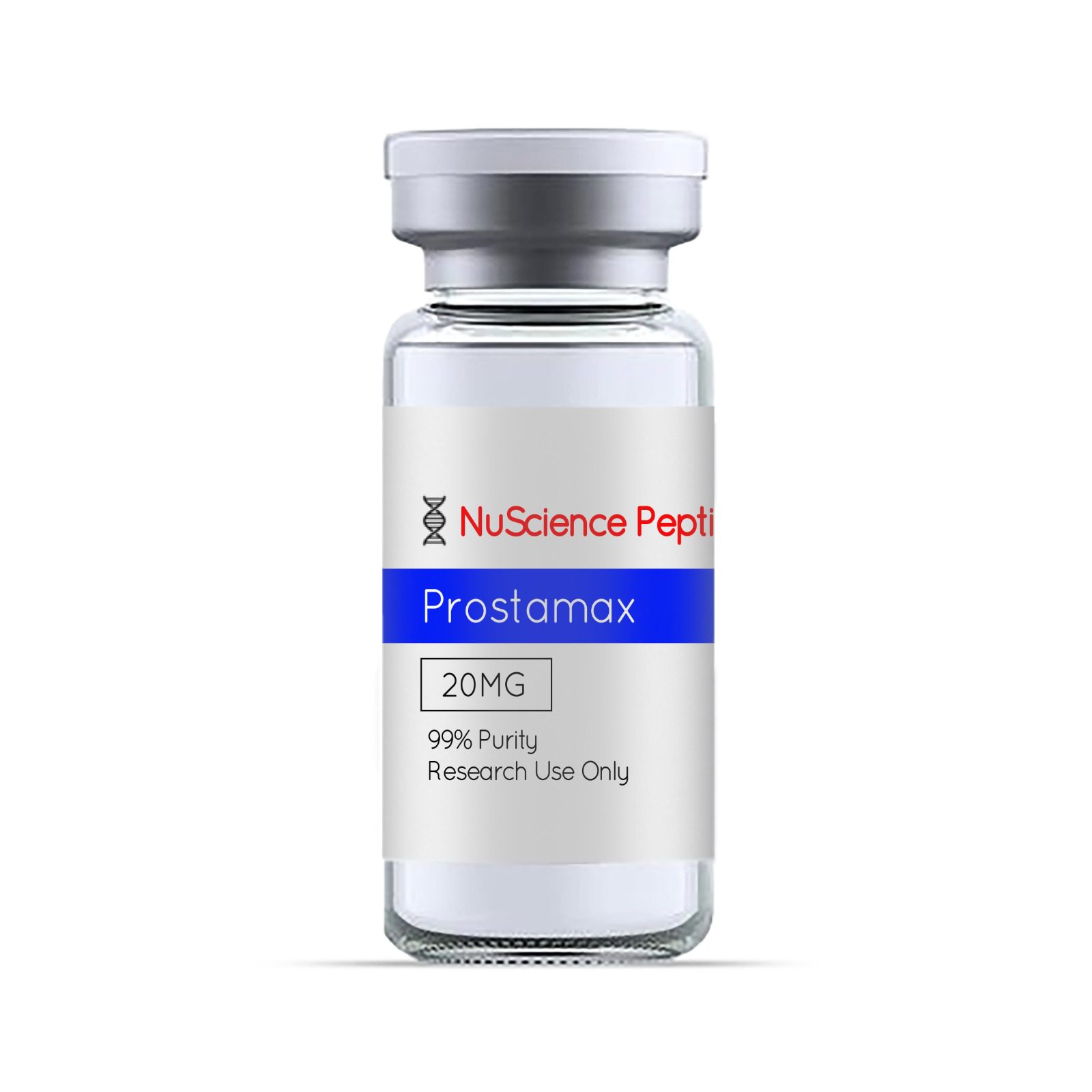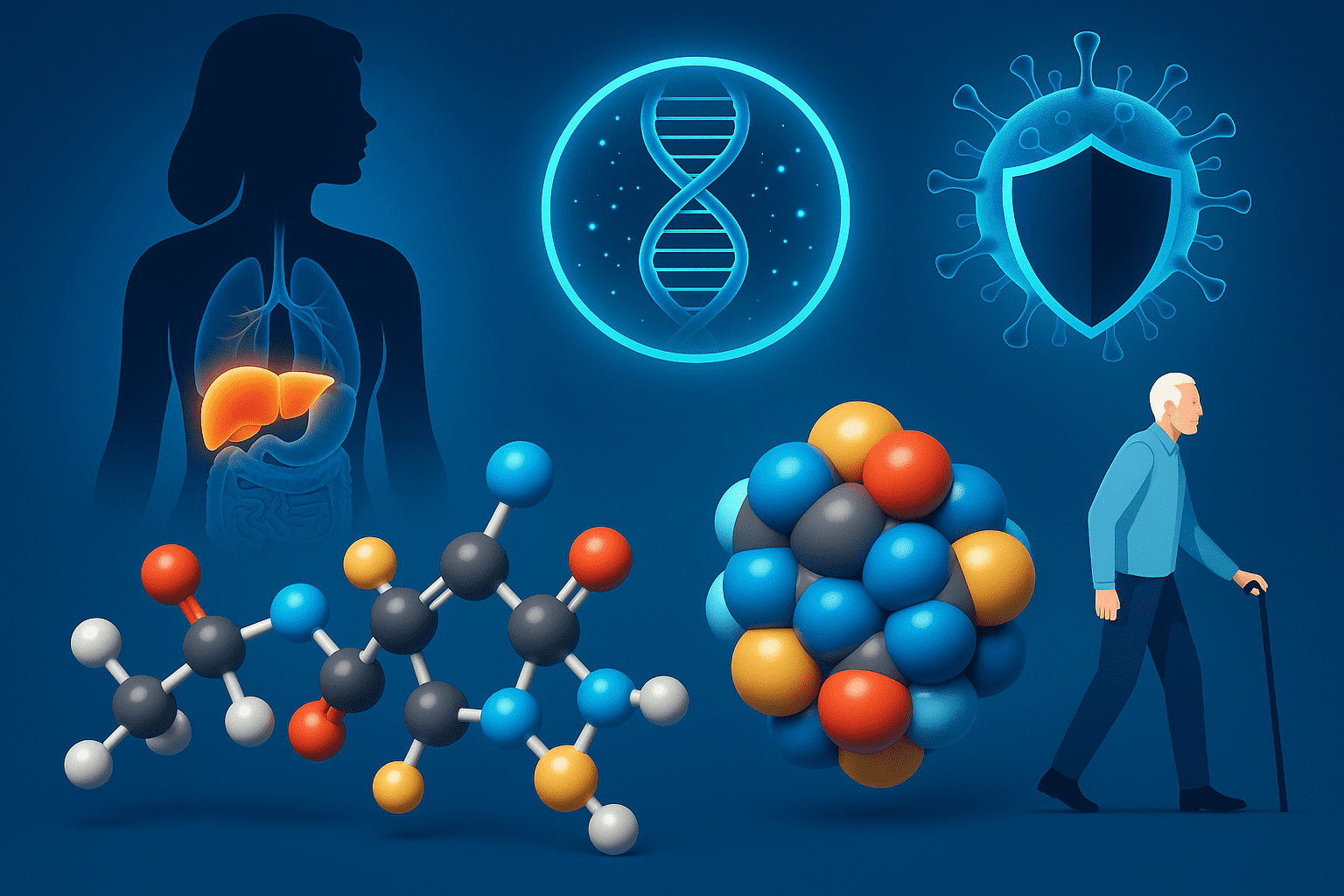In today’s rapidly evolving world, biomedical research is advancing at a striking rate. Prostamax peptide benefits are therefore gaining recognition as a next-generation innovation.
As a lab-based peptide, Prostamax shows potential in research beyond prostate health. It is not just a source of relief, but it has also been researched for its regenerative properties.
In this guide, we’ll discuss what exactly Prostamax is and how it works. Additionally, you will learn about its origin, usage, benefits, drawbacks, and best places to purchase it.
Let’s start.
Part 1. What is Prostamax Peptide & How does it work?
Prostamax is a synthetic tetrapeptide that exhibits anti-ageing and anti-inflammatory properties. It plays a key role in transcription, protein synthesis, and also supports structural repair.
An amazing thing about this peptide is that it works both at the cellular and genetic levels. It targets the prostate gland and also interacts with DNA & influences epigenetic modulation.
Prostamax peptide deals with problems, including
- Tissue shrinkage & regeneration
- Prostate-related inflammation
- Chronic aseptic prostatitis
- Age-related prostate dysfunctions
Plus, it also offers great potential compared to Serenoa repens extract for treating prostate disorders. (Borovskaya et al.2013)
Prostamax Components
Prostamax consists of four main amino acids, including Lysine, Glutamic acid, Aspartic acid & Proline. Abbreviated as Lys-Glu-Asp-Pro.
From these amino acids, Lysine is essential, and Glutamic acid, Aspartic acid, & Proline are non-essential. It is composed of four elements like hydrogen, oxygen, nitrogen & carbon.
- Molecular Formula of Prostamax is: C20H33N5O9
- Molecular Weight of Prostamax is: 487.5g/mol
- Synonyms of prostamax are: SCHEMBL6660498 (pubchem. 2006)
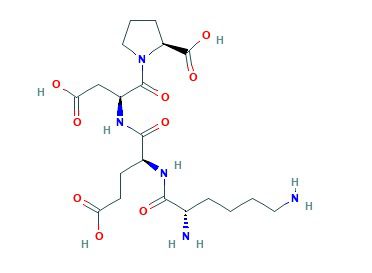
Chemical structure of Prostamax
How does Prostamax Peptide Affect DNA?
Prostamax does not directly enter DNA; instead, it makes its pathway by indirect genetic regulation. It acts through the signalling pathway & chromatin remodelling rather than gene editing.
It also coordinates with intracellular gene expression for extracellular communication. In this way, Prostamax works as a biological messenger.
Now, let’s look at its activity in cells.
- Extracellular signaling
Prostamax, as a regulatory peptide, binds to cell surface receptors for extracellular signaling.
- Signal transduction
Prostamax turns a simple receptor binding into a chain of reactions. Common pathways of reactions triggered may include:
- MAPK/ERK pathway → regulates cell growth and survival
- P13K/AKT pathway → promotes cell repair and anti-apoptosis
- JAK/STAT pathway → controls cell expression related to inflammation & immunity
- Transcription factor control
Pathways of the number of reactions activate the TFs that move to the nucleus. (Berillo et al. 2021)
- Epigenetic modulation
These peptides can bind to the histone protein in the DNA structure. It acts as an epigenetic switch, which turns the gene on and off.
It converts the deactivated region into an activated region. This way, it “normalises” gene activity in aging or damaged tissues without altering the DNA.
- Transcription & translation
This peptide activates the deactivated ribosomal gene for rRNA in the satellite region.
More rRNA = More ribosomes = increased protein synthesis.
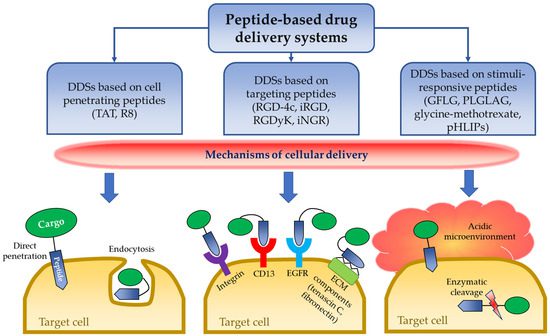
Peptide-based drug delivery system
- Restoration of cell functions
DNA changes caused by peptides restore normal protein production in prostate & lymphocytes. These appear to restore youthful gene expression in aging cells.
The result is increased cell proliferation and reduced apoptosis (programmed cell death). This peptide also improves protein expression and cell functions. (Khavinson et al.2004)
Part 2. Prostamax Peptide Benefits
Prostamax peptide is popular as it fixes many problems in a man’s body. Let’s explore the key benefits of Prostamax that make it so effective for men’s health
What Prostamax 20 do for men?
When we talk about what Prostamax 20 do for men, it goes beyond just prostate health. It benefits men by restoring normal cell functions & improving gene expression.
It also works on molecular & epigenetic levels, helping the body unlock silenced DNA regions. This unique mechanism supports prostate health & anti-aging.
- Chronic Aseptic Prostatitis
Prostamax reduces hyperemia (excess blood flow) & lymphoid cell infiltration. It also prevents fibrosis (collagen buildup).
Treated prostate with Prostamax shows:
- Normalised glandular volume
- Reversal of lumen shrinkage in acini (glandular ducks)9
- Reduced tissue density
- Prevention of epithelial cell atrophy (shrinking/ dying cell)
- Anti-aging Effects
Prostamax helps to maintain a youthful profile by reactivating the ribosomal silenced gene.
- It unlocks DNA for healthy protein synthesis
- Prostamax functions as a histone-related regulator
- It also, promotes chromatin remodeling & gene expression (Khavinson et al.2004)
- Tissue Regeneration in Benign Prostatic Hyperplasia (BPH)
When Prostamax is used for BPH, it gives the following results.
- Reduces prostate mass and volume
- Prevent abnormal tissue growth
- Reverses structural & functional changes in BPH progression (Borovskaya et al.2014)
- Tissue-specific Effect
Prostamax does not act everywhere in the body. It works specifically on the targeted prostate gland to improve cell function & inflammation.
- Epigenetic Modulator
Prostamax unpack the DNA that became packed because of aging and epigenetic changes. After unpacking, it makes DNA accessible to the body, especially in lymphocytes, to increase:
- Protein synthesis
- Cell function restoration in aging tissues. (Khavinson et al.2004)
Part 3: Prostamax Side Effects
Prostamax is still being studied and so far has been well tolerated. No side effects have been seen on a large scale. But in early lab tests or animal models, some mild effects have been noticed.
These mild effects are not specific to Prostamax—they are common to many peptide supplements or injections. These may include:
- Headaches
- Discomfort in digestion
- Irritation at the injection site (for injectable form)
- Poor in vivo stability
- Poor membrane permeability (Wang et al. 2022)
Note:
Peptide users sometimes mention minor stomach issues like burning or diarrhoea. Even if this happens, it’s usually mild.
Part 4. Prostamax Dosage (Experimental Use Only)
No human trials have confirmed a safe dosage yet. All information is from experimental or animal studies.
In one study using male rats with chronic prostate inflammation, the researchers gave 20 micrograms per kilogram of body weight each day for 15 days.
They observed:
- lowered inflammation and redness
- less collagen buildup, which helped stop fibrosis
- protection against tissue shrinking
- normal-looking prostate
Note:
This dosage is based on standard safe ranges for peptide studies.
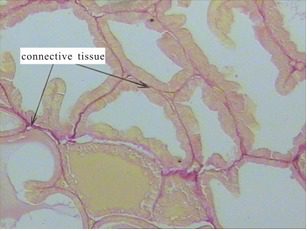
Collagen production is reduced in the prostate
Part 5. Where to Find Prostamax
Selecting the right supplier is essential if one wants a safe, potent, & reliable peptide.
You can consider NuScience Peptide if you want to purchase Prostamax. It is delivering the promised benefits without hidden ingredients.
Why Choose NuScience Peptide?
It is a well-known name in the world of peptide research. Many researchers trust NuScience Peptides because it offers
- Fast & reliable shipping
All in-stock orders placed before 12 p.m. EST are shipped the same day for your convenience.
- Committed customer care
For every step— whether it’s a question, guidance, or special request NuScience is there to help. It commits to make your experience stress-free & convenient.
- Shipping benefits
NuScience offers free shipping on orders of $200 or more. Shop with ease knowing your product will arrive at no extra cost.
- Certified purity standards
NuScience peptide also ensures the purity of products. Each product is lab-tested to guarantee its highest purity, safety, and performance.
Now visit it to find top-grade Prostamax peptides. Click below and shop with complete confidence.
Prostamax Peptide from NuScience Peptide
Conclusion
Prostamax may help regulate gene activity & prostate health. It promised prostate health at the molecular and cellular levels.
Prostamax peptide benefits make formulated peptides a powerful research tool. Scientists will find prostamax peptide benefits at the cellular & genetic levels.
Further studies may unlock even broader applications of prostamax. This will make it a cornerstone in Prostamax research in regenerative health.
This supplement, developed by NuScience peptides, is a lab-tested & high-quality peptide—a trusted choice for cutting-edge prostate research.
Disclaimer
Prostamax Peptide is supplied for research work in laboratories. It is not approved for human consumption & must not be used for diagnosis and treatment. This peptide should only be handled by a qualified researcher. The data provided is for educational & informative purposes. The manufacturer & suppliers are not responsible for off-label applications. Always follow scientific guidelines & ethical standards when working with research peptides.
References
Borovskaya, T. G., Pakhomova, A. V., Vychuzhanina, A. V., Poluektova, M. E., Fomina, T. I., Ermolaeva, L. A., Schemerova, J. A., Granstrem, O. K., & Neplochov, E. A. (2013a). Experimental study of the drug efficiency Prostamax in the therapy of chronic aseptic prostatitis and its complications. Modern Research in Inflammation, 02(03), 54–58. https://doi.org/10.4236/mri.2013.23007
Khavinson, V. Kh., Lezhava, T. A., & Malinin, V. V. (2004). Effects of short peptides on lymphocyte chromatin in senile subjects. Bulletin of Experimental Biology and Medicine, 137(1), 78–81. https://doi.org/10.1023/b:bebm.0000024393.40560.05
Borovskaya, T. G., Fomina, T. I., Shchemerova, J. A., Poluektova, M. E., Vychuzhanina, A. V., Kamalova, S. I., & Ermolaeva, L. A. (2014). Experimental study of the efficiency of tetrapeptide lysil-glutamyl-aspartyl-proline using the model of benign prostatic hyperplasia. Modern Research in Inflammation, 03(03), 108–112. https://doi.org/10.4236/mri.2014.33013
Wang, L., Wang, N., Zhang, W., Cheng, X., Yan, Z., Shao, G., Wang, X., Wang, R., & Fu, C. (2022). Therapeutic peptides: Current applications and future directions. Signal Transduction and Targeted Therapy, 7(1), 1–27. https://doi.org/10.1038/s41392-022-00904-4
Berillo, D., Yeskendir, A., Zharkinbekov, Z., Raziyeva, K., & Saparov, A. (2021). Peptide-Based drug delivery systems. Medicina, 57(11). https://doi.org/10.3390/medicina57111209


